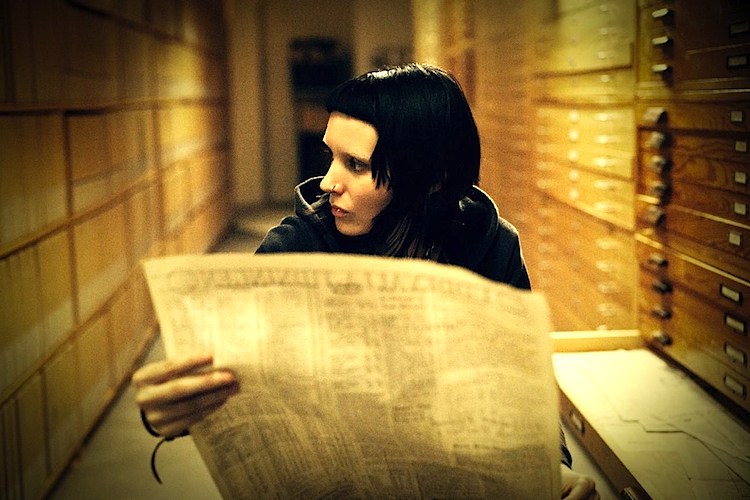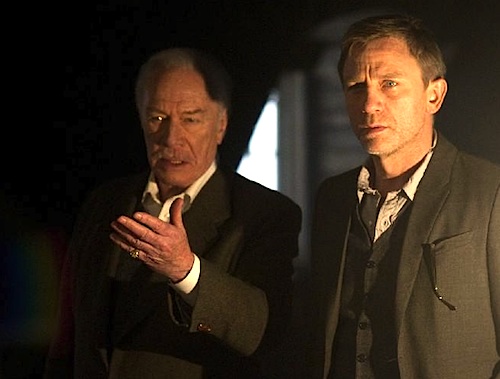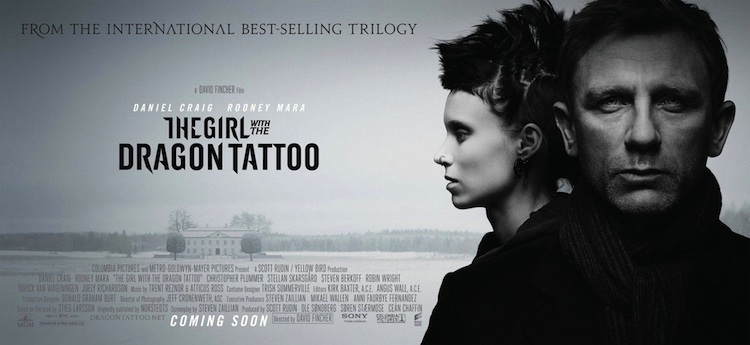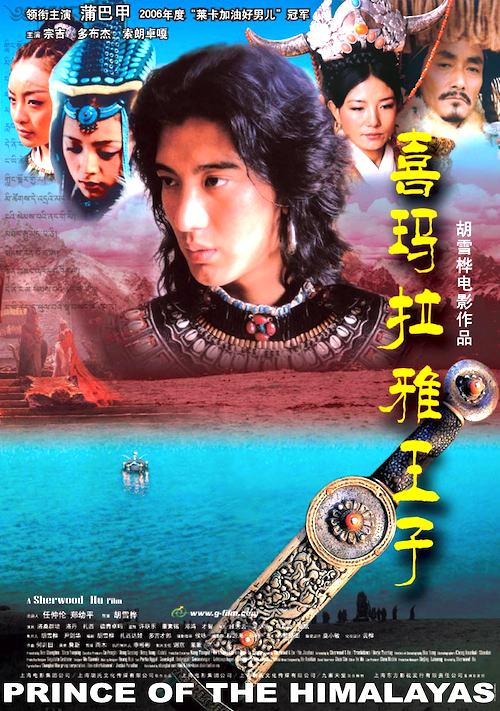By Joe Bendel. For a while, Lisbeth Salander was like Scarlett O’Hara with a nose ring. Every actress claiming to be under thirty who was not in contention for the role should have fired her agent. Eventually Rooney Mara was chosen to follow in Noomi Rapace’s footsteps. It was one of several odd choices that produced David Fincher’s surprisingly straight forward remake of The Girl with the Dragon Tattoo (trailer here), which opened Tuesday in New York (a few hours earlier than first announced).
Stop me if you’ve heard this one before: Lisbeth Salander is a difficult woman to get to know. However, the hacker for hire can find out all there is to know about anyone else—for a price, of course. Her latest target she actually finds sort of interesting: Mikael Blomkvist, a crusading journalist just found guilty of libeling a controversial businessman. Based on Salander’s vetting, Blomkvist has been hired by retired industrialist Henrik Vanger to solve the decades old disappearance of his favorite niece Harriet.
Still grieving the loss of the teen-aged girl, the old Vanger finds little comfort from the rest of his ghoulish clan, many of whom were (and continue to be) open National Socialist sympathizers. With a large, ugly family full of suspects to check out, Blomkvist has his work cut out for him, but he will find an unlikely ally in Salander, once she has dealt (severely) with some of her own personal issues.

As fans of the series already know, Blomkvist and Salander soon suspect the disappearance of the Vanger niece is part of a hitherto undetected pattern of serial killings. Indeed, anyone who has seen Niels Arden Oplev’s Swedish Tattoo will find no surprises in Fincher’s remake. All the villains and shocking revelations remain exactly the same.
Frankly, Fincher’s approach to the material is nearly identical as well, delving into lurid family secrets to find grisly thrills. Nor does he shy away from the forerunner film’s two infamous inter-related scenes involving Salander and her so-called legal guardian. Yet, despite the cool dark vibe, Tattoo is not particularly Fincheresque. Compared to Fight Club and even The Social Network, it is far more conventional than auterist.
In terms of casting, Daniel Craig is a perfect fit for Blomkvist, looking like the slightly younger and more attractive brother of his Swedish predecessor, Michael Nyqvist. He is very convincing as the world weary journalistic everyman with an edge. In contrast, Rooney Mara is impossible to buy into as Salander. To put it bluntly, she looks like a horrendously made-up little girl rather than a grown woman, which might be in keeping with the source novels, but simply does not work on-screen, especially in her more harrowing scenes.

If you are going to remake one of the Salander films, Tattoo is the one to do. It features the most intriguing mystery that best stands alone. Wisely, Steven Zaillian’s screenplay downplays Blomkvist’s leftist ideology, but it also waters down the subplot involving Sweden’s Nazi-sympathizing past, which gave Oplev’s version some of its distinctive seasoning. Still, when Blomkvist and Salander’s investigation starts humming along, it is easy to get caught up in the film’s energy.
Fincher’s Tattoo is certainly a professionally crafted film. Cinematographer Jeff Cronenweth gives the film an icy, grey look that perfectly represents Sweden. Trent Reznor and Atticus Ross’s electro-industrial-ambient score is also eerily effective, largely establishing an independent identity for the film by itself. Still, considering how closely this Tattoo parallels the original, one wonders why they bothered to remake it. Critically miscast in a key role, Fincher’s Tattoo is a watchable but unnecessary remake. An acceptable compromise film during the holiday season but not worth standing in long lines for, Tattoo opened Tuesday in New York at the AMC Empire.
Posted on December 22nd, 2011 at 11:18am.


